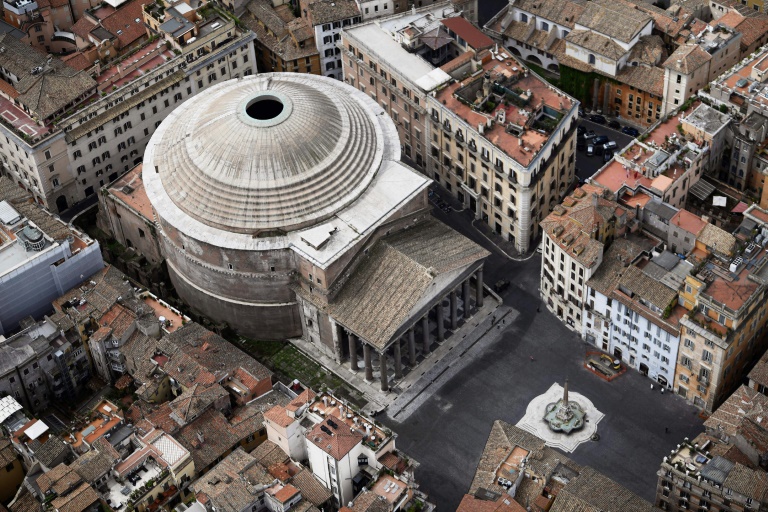
An aerial view of the Pantheon in Rome taken in May 2020, which features the world’s largest unreinforced concrete dome – AFP/File
How did Roman buildings such as the Pantheon or the aqueducts hold up over time so well? It’s a question experts in the field have been asking themselves for a long time.
American and European researchers believe they have finally discovered the secret to the longevity of these architectural marvels, which are nearly 2,000 years old: concrete is capable of repairing itself.
While some modern buildings fall into disrepair after a few decades, scientists hope this discovery will help reduce the impact on the environment and climate of producing concrete, which generates large amounts of greenhouse gases.
Until now, the hardness of Roman concrete was attributed to its connection with volcanic ash from the Gulf of Naples region, in Italy, which was sent throughout the empire for building purposes.
But the researchers are now focusing on the presence of another property: small, white, shiny lumps that come from lime, another ingredient used to make concrete.
“Since I began working on Roman concrete, I have always been fascinated” by the existence of these pieces of material, MIT Professor Admir Masic, co-author of the study published in the journal Science Advances, said in a statement. . “It is not found in modern concrete, so why is it found in ancient?” he asked himself.
Until now, experts believed that these small pieces came from a bad mixture or poor quality raw materials.
However, when examining the concrete using advanced imaging techniques for the Privernum city wall in Italy, they discovered that these tiny white chunks come from calcium carbonate, which was formed at very high temperatures.
They concluded that the lime was not — or at least not only — incorporated into the water mixture, as had been thought, but in the form of quicklime. Hot mix gives concrete an amazing hardness.
The researchers concluded that when cracks appear, rainwater in contact with the concrete produces a saturated calcium solution, which then crystallizes back into calcium carbonate, allowing the cracks to be filled.
To verify their hypothesis, scientists conducted experiments with the same procedure on walls that had cracks, with the result that within two weeks, the wall completely repaired itself upon contact with water. With this discovery, the scientists hope to be able to commercialize the new modified concrete recipe.

“Proud explorer. Freelance social media expert. Problem solver. Gamer.”

:strip_icc()/s03.video.glbimg.com/x720/12789822.jpg)
:strip_icc()/i.s3.glbimg.com/v1/AUTH_59edd422c0c84a879bd37670ae4f538a/internal_photos/bs/2024/1/O/S6O6oKQwScXfbCIlfKag/000-364x8a3.jpg)
:strip_icc()/s04.video.glbimg.com/x720/12781543.jpg)


